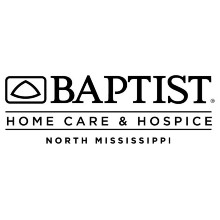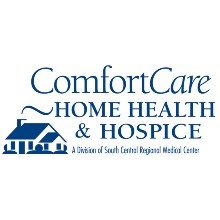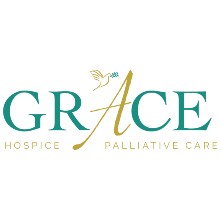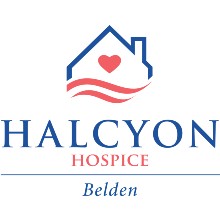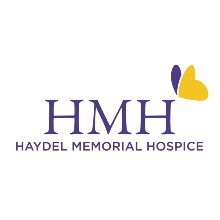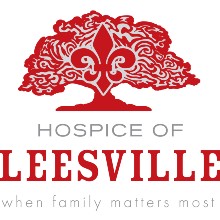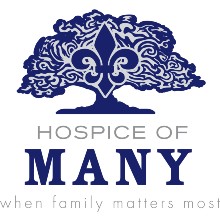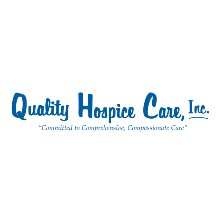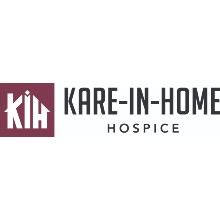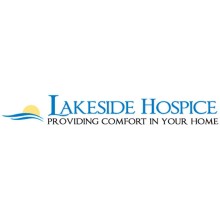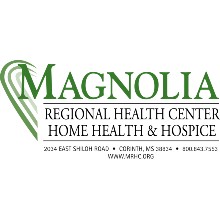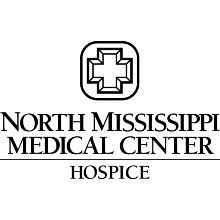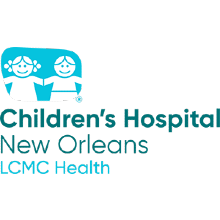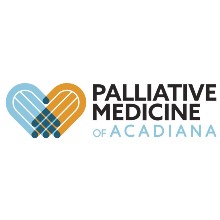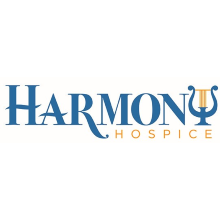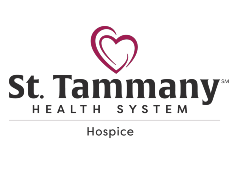FREQUENTLY ASKED QUESTIONS (FAQ)What is hospice?
Hospice is a special way of caring for people who are terminally ill and for their family. Hospice care includes physical care and counseling. Hospice care is provided by either a public agency or a private company, approved by Medicare and/or Medicaid. It is for all age groups, including children, adults and the elderly during the final stages of life. The goal of hospice is to care for you and your family by controlling symptoms and promoting comfort, not to cure your illness. If you qualify for hospice care, you can get medical and supportive services, including nursing care, medical social services, doctor services, counseling, personal care, homemaker services, and other types of services as needed. You will have a team of doctors, nurses, home health aides, social workers, counselors and trained volunteers to help you and your family cope with your illness. In many cases, you and your family can stay together in the comfort of your own home. Depending upon your condition, you may also receive hospice care in a hospice facility, hospital, or nursing home. How does hospice work?
Your doctor and the hospice team will work with you and your family to set up a plan of care that meets you and your family’s needs. The plan of care includes the hospice services you need, that are covered by Medicare, Medicaid and/or private insurance. The care that the hospice gives you is meant to help to experience the best quality of life by making you as comfortable and pain free as possible. As a hospice patient, there is a team of people that will help take care of you. This team is referred to as the Interdisciplinary team. They are…
What are the four levels of hospice care?There are 4 levels of hospice care:
The vast majority of hospice is delivered at the Routine Home Care level, meaning care that is delivered in the patient’s home, whether their home is in their actual residence, a family member’s home, an assisted living facility, a personal care facility or a nursing home. Wherever the patient calls “home” that’s where you’ll find the majority of hospice patients and the interdisciplinary team (the hospice doctor, nurse, social worker, home health, chaplain and volunteers) will all travel to there to provide care and support, based on patient/family needs. Respite Care is available to give the caregiver a time to rest and recuperate, or for personal time. Respite Care can be provided in a contract facility such as a hospital, inpatient hospice unit, or nursing facility. The only requirement is that the facility must have 24 hour nursing services. Respite care is provide up to 5 days at a time. Inpatient Care is available to provide short-term crisis management of pain or symptoms that cannot be accomplished in the home setting. Inpatient Care can be provided in a contracted facility such as a hospital, inpatient hospice unit, or nursing facility that has a 24-hour RN available. Inpatient Care can be provided for as long as active symptom management is needed and the crisis has passed. Continuous (or Crisis) Care is like Inpatient Care, in that it is available to provide short term crisis management (primarily nursing care) in order to achieve comfort of acute medical symptoms. The difference between Inpatient Care and continuous care is that care can be provided in the patient’s/family’s home, nursing facility, Assisted Living Facility, and Personal Care Home, if allowed by state regulations. Continuous Care can be provided as long as needed to eliminate any crisis related to pain or symptom management. What is routine home care? The Hospice Benefit covers four levels of care: Routine, In-Patient, Continuous and Respite Care. However, most patients admitted to hospice are admitted for routine home care. Hospice Routine Home Care is provided wherever the patient may call home. Home could be the patient’s private residence or that residence of a loved one, assisted living, a long-term care facility or nursing home. Frequently hospitalized patients with life limiting illness have preferred to return to home under hospice routine home care. In the company of their family, pets and the familiar surroundings of their home environment the patient’ s disease symptoms and pain are controlled by the on-going supervision and interventions of a multifaceted hospice team. Routine hospice home care is a unique approach to patient care. No other healthcare program like hospice provides a medical team comprised of licensed and certified nursing staff, a master’s level or higher social worker, chaplain or spiritual counselor, and trained hospice volunteers. Overseeing the patient’s routine home care are medical directors whom are often Board Certified in Hospice and Palliative (Comfort) Management. Known as the “Interdisciplinary Team” they work closely together with the patient to provide symptom management and address issues affecting the quality of life of the patient and his/her loved ones. Routine home care involves scheduled visits made by the Interdisciplinary Team. The RN frequently assesses the patient’s clinical status making modifications to the patient’s plan of care as needed. A LPN may visit to evaluate the patient’s medication use, provide wound care, etc. A certified nursing assistant or CNA may help ease the burden of the patient’s primary caregiver by assisting with bathing, toileting, and linen changes. The hospice social worker can aid in a variety of concerns such as providing contacts for community services, aiding with advanced directives, burial arrangements, etc. A chaplain or spiritual counselor is readily available to provide guidance and comfort to the patient and/or family in accordance with the patient and/or family’s faith belief. Hospice provides volunteers whom fill a variety of patient or caregiver needs such as reading to the patient or providing reprieve for the caregiver to leave the home to take care of business matters. Perhaps one of the greatest strong points of routine care is the relationship established between the patient, caregiver, and hospice staff. Ultimately we cannot change the patient’s outcome; but by continual patient education the hospice team can prepare the patient and/or loved ones and hopefully reduce their anxieties as the disease progresses. With routine home care the hospice team is always available for the patient and/or caregiver, 24/7. The hospice team is merely a phone call away and can make visits as needed, day or night, weekend or holiday. If needed, the Hospice nurse has ready access to the hospice medical director and pharmacist, should a patient crisis arise in the middle of the night the matter can be attended to promptly. With routine home hospice care most patient concerns can be handle within the patient’s home. Seldom is there a need to call 911 and/or rush the patient to the ER. Along with the services of the “Hospice Team” the hospice assumes responsibility for providing medications, medical supplies, and durable medical equipment, which are related to the patient’s terminal illness. Hospice makes arrangements for the medications, medical supplies, and equipment to be delivered to the patient’s home. Medicare, Louisiana Medicaid, Mississippi Medicaid, Veterans Administration and most private insurance cover the financial obligations of hospice care and reimburse directly to the hospice provider. Admission to hospice Routine Home Care requires a physician’s order stating the patient has a life limiting disease and given the circumstances of the patient’ s condition he/she may die within the next six months of life if the disease progresses as normally expected. Also, the patient and/or his/her legal representative must have exhausted all possible active treatments or no longer wishes to pursue active treatment for his/her life limiting disease. Of course, at any given time the hospice patient or his/her legal representative may revoke the hospice benefit to seek active treatment. And “six months of life” does not mean the patient will be discharged from hospice should he/she continue to live. In fact, a hospice patient often exceeds the “six month” period when he/she has controlled symptom management, restored quality of life due to emotional support of loving family and friends at home, and ongoing interventions of the hospice team. Routine hospice home care is the choice for someone with a life limiting disease that wants to return to their home surrounded by those people and things that contribute to their quality of life. What is continuous care?
Continuous home care (CHC) is care that is provided during a period of crisis as necessary to maintain an individual at home. A period of crisis is a period in which a patient requires continuous care which is predominantly nursing care to achieve palliation or management of acute medical symptoms. If a patient’s caregiver has been providing a skilled level of care for the patient and the caregiver is unwilling or unable to continue providing care, this may precipitate a period of crisis because the skills of a nurse may be needed to replace the services that had been provided by the caregiver. This type of care can also be given when a patient resides in a long term care facility. However, Medicare regulations do not permit CHC to be provided in an inpatient facility (a hospice inpatient unit, a hospital, or skilled nursing facility(SNF). What is respite care?Respite Care is care given to a hospice patient by another caregiver so that the usual caregiver can rest. Medicare realized the contributions of the caregiver when attending to a patient under routine home care. Respite Care allows the caregiver time to refresh his/her own energies. As a hospice patient, you may have one person that takes care of you every day. That person might be a family member. Sometimes your caregiver needs someone to take care of you for a short time while they tend to other things that need to be done. The caregiver has the liberty to do whatever he or she needs to do during this time. Respite Care can be provided for up to five days. During a period of Respite Care, you will be cared for in a Medicare-approved facility, such as a hospice facility, hospital or nursing home. Each hospice must have a contract with a 24/7 facility to provide respite care. Respite Care is usually provided in a long-term care facility or hospital. For those five days the hospice follows the patient in the contracted facility and coordinates care with the contracted facility. Periodically Respite Care is available to the caregiver. Should the patient need to stay longer than 5 days it would become the responsibility of the patient to assume financially the additional days of stay; however, hospice would continue to follow the patient. What is an inpatient hospice?
Inpatient hospice care is a higher level of hospice care provided in a facility when symptoms cannot be effectively managed in a home setting. When a patient’s symptoms are under control and the patient elects to receive “routine hospice care” or residential care in an inpatient facility, the hospice benefit will cover the cost of hospice care but will not cover the cost of daily room and board. Anyone meeting eligibility requirements for hospice can be admitted to an inpatient unit when their hospice team deems it beneficial to the patient and they can remain there as long as a higher level of care is appropriate.
What does the Medicare/Medicaid hospice benefit cover?
If you are a Medicare or Medicaid beneficiary, the following hospice services are all covered at no charge to you:
What does the Medicare/Medicaid hospice benefit not cover? Hospice is a wonderful service and covers all the care that is related to the terminal diagnosis and related conditions. However, there are some services that hospice will not cover. For example, although rare, there are some conditions that your physician may determine are unrelated to the hospice diagnosis. In addition, there are certain conditions that must be met in order for hospice to cover the care. When you choose hospice care, you’ve decided that you no longer want care to cure your terminal illness and related conditions, and/or your doctor has determined that efforts to cure your illness aren’t working. Medicare won’t cover any of the following services once you choose hospice care:
For more information, you should contact your hospice provider or please call 1-888-546-1500 and someone will assist you with finding the information that you need Is hospice available in a nursing home?Generally, the answer is yes. Although nursing homes are considered to be the most regulated segment of the American health care system, they are not required by law to provide hospice care. Nursing home regulations are aimed at restoring individuals to the “highest practicable level of function.” In order to be a Medicare-certified hospice provider, certain “conditions of participation” must be met. These two sets of regulations are often conflicting. Many nursing home residents are in a state of irreversible declining functional state. In order to provide appropriate, quality care for these residents, and still be in compliance with federal regulations, most nursing homes will contract with one or more local hospice agencies. Few nursing homes will not provide hospice care. Few nursing homes will contract with all of the local hospices. Therefore, choice of hospice agency in a nursing home may be limited. However, hospice care is generally available in nursing homes.
What will I have to pay for hospice care?If you are a Medicare/Medicaid beneficiary, the government pays the hospice for your hospice care at home and all services related to your terminal illness. You may have to pay:
Although many, if not most, hospices do not charge anything for their services, the hospice can charge up to $5 for each prescription for outpatient drugs and/or other similar products for pain relief and symptom control.
For example, if Medicare pays $100 per day for inpatient respite care, you will pay $5 per day. You can stay in a Medicare-approved hospital or nursing home up to 5 days each time your receive respite care. There is no limit to the number of times you can get respite care. The amount you pay for respite care can change each year. What is Palliative Care?
Palliative Care is specialized medical care for patients with serious illness and focuses on relieving the stress, pain and symptoms associated with illness. This is provided by a team of professionals alongside your other physicians and care team which can include specialized physicians, nurses, social workers and chaplains. Palliative Care seeks to support patients and families holistically, not only with medical support but also emotional, social and spiritual support when needed. They seek to care for the whole person, not just the isolated illness. For those who are familiar, this sounds a lot like hospice care and indeed Hospice Care is a form of palliative care but is only for those that are felt to be in the last 6 months of life. In contrast, palliative care can be provided at any point along the illness journey. The focus of palliative care is to care for not only the patient, but also the family and can be helpful in guiding families through complex and stressful medical experiences. Palliative care practitioners have specialized training in communication in addition to training in pain and symptom management. Practitioners are often able to support and guide families in making decisions and in communicating with their care teams. The foundation of communication is understanding: Do I understand you? Do you understand me? When someone is sick palliative care can help the care team understand the patient and family and what is important to them. They can also help the patient and family understand the medical situation more fully so that their decisions are based on good understanding. Palliative care ensures patients and families get the kind of care they want. Palliative Care is provided in most hospitals and if you feel you or your loved one can benefit from more support you can ask for this service when hospitalized. Palliative Care is growing to meet the needs of patients and families and can now be found in some outpatient clinic locations in Louisiana and Mississippi. These clinics often support patients with cancer and other serious illnesses, who have significant pain or other difficult. They are also able to offer guidance and emotional support throughout the course of a difficult illness. Palliative Care can help patients and families get the support they need, even if they are not yet eligible for hospice services. |


















